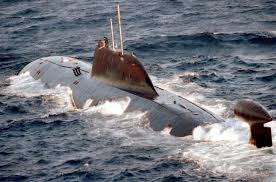Swedish Mystery

On Thursday, October 17, the Swedish newspaper Svenska Dagbladet, ran a report that the Swedish National Defense Radio Establishment detected radio communication in Russian. The newspaper claimed that the communication was detected on a frequency used by the Russian Navy in emergency situations. However, on Friday night, the underwater vehicle was detected again, and this time signal intelligence was able to detect where the signal was being sent to, and where it was sent from. The signal receiver was detected to be in Kaliningrad, Russia and the signal was sent from the Stockholm Archipelago, near the Swedish capital city. This led to a massive search operation by the Swedish military, the largest of its kind since the Cold War. A member of the Swedish armed forces close to the search operation claimed, “We are now focusing on determining if there is ongoing foreign underwater activity or not.”
On Sunday, the Swedish military determined that it was “very likely” that foreign activity was taking place underwater around Stockholm’s archipelago. The military came to this decision from the signal, testimony of several eyewitnesses who claimed to have seen a black object surfacing from under the water, and a picture of the black object floating on the surface of the water. The military held a press conference where they denied receiving any emergency call in Russian, but did not want to comment on the signal receiver in Kaliningrad. Supreme Commander General Sverker Göranson stated that the most important goal of the search operation was not necessarily to find the submarine, but to “send a very clear signal that Sweden and its armed forces are acting and are ready to act when we think this kind of activity is violating our borders.” Göranson also stated that the aim of the conference was to “force whatever it is up to the surface… with armed force, if necessary.”
Göranson claimed that submarines are “extremely difficult” to find, and that Sweden had never succeeded when it came to tracking them down in the past; he added that “no one else has either.” Sweden has a storied history of trying to track down Russian submarines. In the 1980s and early ‘90s, Sweden’s defense forces routinely played a high stakes game of cat and mouse with vessels suspected to be Soviet submarines in its territorial waters. Rear Admiral Anders Grenstad of the Swedish Navy claimed that the aim of the operation had shifted to gathering intelligence, and not military action. He wanted to stress that “this is not a U-boat hunting operation which has the aim of bringing down an opponent with military might.”
After a week-long search effort, the Swedish military has officially ceased its search effort for the underwater vessel. Rear Admiral Ander Grenstad commented, “This means the bulk of ships and amphibious forces have returned to port.” However, he did mention that some smaller units would remain in the search area. Grenstad claimed, “We assess that the vessel that violated our waters has now left.” He added, “It’s the assessment of the defense forces that probable foreign underwater activity has taken place in Stockholm’s inner archipelago” as well as stating that any such activity within Swedish territory is “unacceptable”. It is believed that at least one vessel was involved in the incident, and that it was probably not large submarine, but a “small vessel”. The Russian Defense Ministry issued a statement claiming Russia had nothing to do with the incident, “There have been no extraordinary, let alone emergency situations, involving Russian military vessels.”
FSA Connection Questions
- In the article, the author seems to offer what main idea?
- Select the best two sentences from the story supporting the idea that the vessel was probably a Russian submarine.
- Select one sentence that best summarizes the work.
- In the piece, the word “archipelago” means what?
- What is the connotation of the word “vessel” in the story?

Hunter Chandler is a 16 year old junior currently attending Freedom High School. Hunter was born on April 5th, 1998 in West Palm Beach, Florida. When he...










